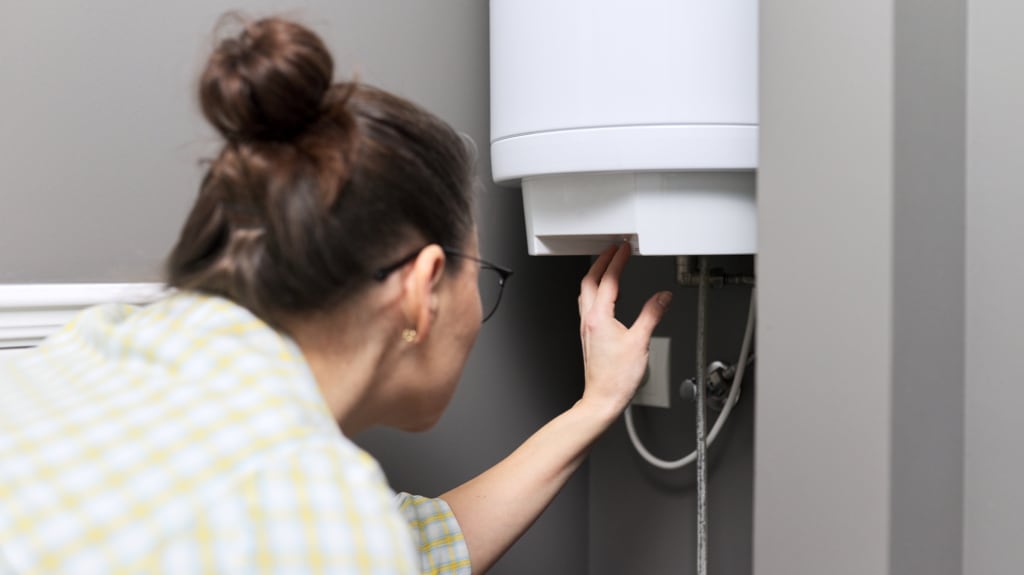Since having hot water is essential for everyday activities, a defective or broken water heater can cause problems. To optimize its performance and extend its lifespan, it's important to check its condition regularly and do any necessary repairs.
Time: 2 hours
Difficulty: High
1. Firstly, flip the circuit breaker connected to the water heater.
2. Inspect the exterior of the water heater and see if any signs of rust have appeared since the last time you checked. Rust is most often found around the bottom of the tank.
3. If the exterior is dusty or dirty, wipe it down with a wet cloth.
4. Take a moment to check if the water heater is leaking. Look for traces of water on the floor, near the water heater or on the tank itself.
5. Ensure that the thermostat reads at least 60°C.
6. Once you've inspected the exterior of the tank, take a look at the hot and cold water connectors. Make sure they're connected securely and are not leaking.
7. If the hot water flowing from the pipes looks different than usual—if it's discoloured or has residue, for example—this might be a sign of sediment buildup at the bottom of the tank (be it rust or residue from city pipes). If this is the case, you should probably call a plumber or water heater repair company.
8. A water heater usually has 2 or 3 heating elements. Since they're found inside, it's best to ask a specialist if they're still in good condition. While there is a tool, called a multimeter, that can be used to check if the elements are still working, it also requires other tools and a thorough understanding of how water heaters work.
9. Note the installation date of the water heater, which is usually found on a sticker on the tank. Then, verify how old your water heater is and what its lifespan is. You can often find this information on the water heater itself. Otherwise, check the warranty, invoices or the web.
Photo: Adobe Stock/Valerii Honcharuk




